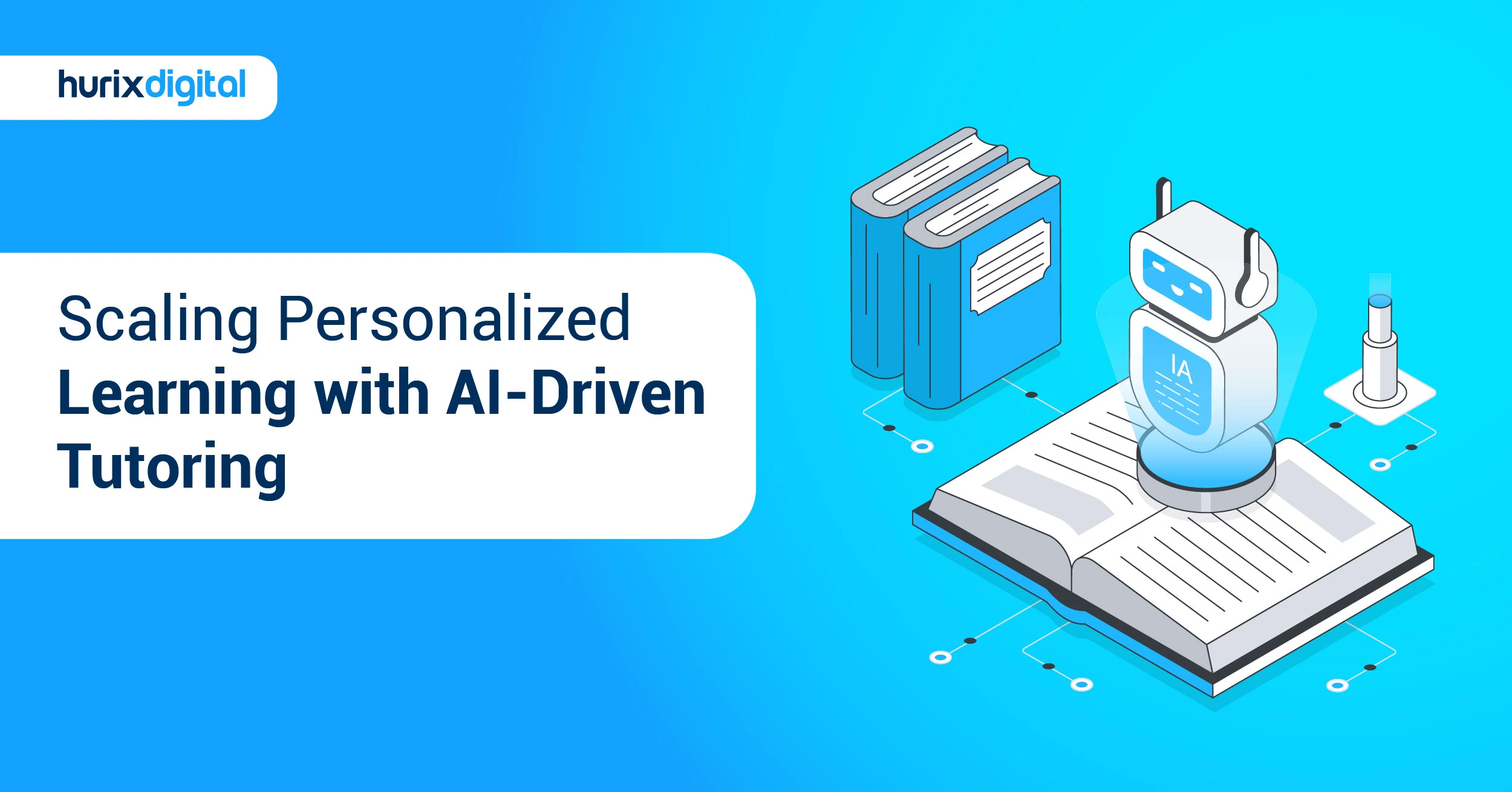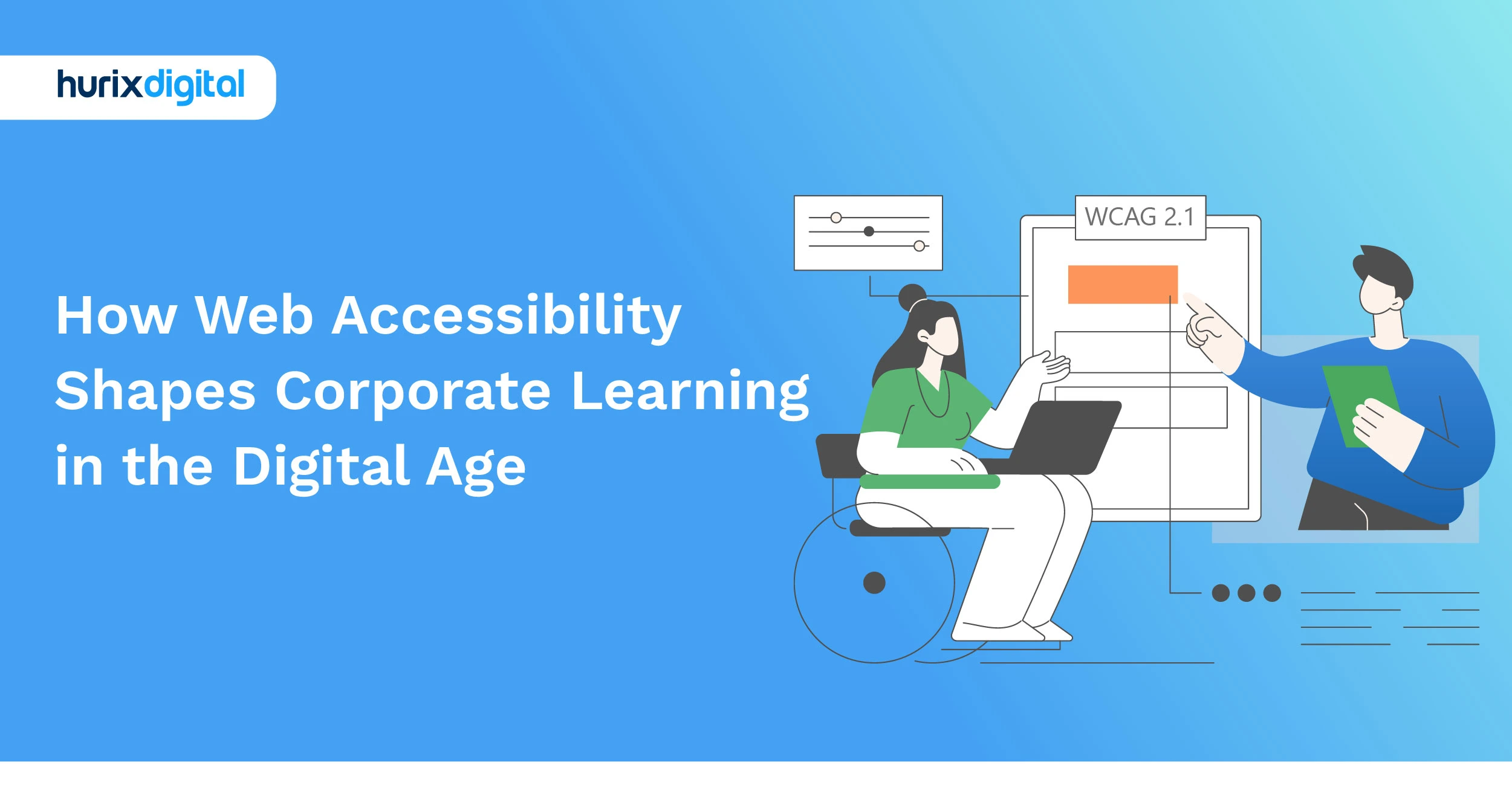
Fast-Tracking Course Development Without Compromising Quality
Summarize with:
Course design and development are important parts of the content-building workflow for publishers, corporations, and other entities. Although the subjects and outcomes may be diverse, the process is similar to building a high-quality product.
The demand for high-quality content is growing as consumer expectations grow. In 2021, the global eLearning market was valued at $210.1 billion. It is growing at a compound annual growth rate of 17.54% and will reach $848.12 billion by 2030.
At the same time, the number of players vying for market share is growing. Hence, putting the right e-content design and development process in place is a top priority for content publishers. Such a process must facilitate the seamless churning out of high-quality content in an efficient, sustainable, and scalable manner.
Table of Contents:
- Course Design vs Course Development
- Key Skills Needed for Course Design & Course Development
- Understanding the Importance of Efficient Course Development
- The Role of Streamlined Course Uplift Services
- Strategies to Accelerate Time to Market in Online Learning
- Maximizing ROI through Efficient Course Development
- Leveraging Technology to Enhance Course Efficiency
- Best Practices for Optimized Course Development
- Conclusion
Course Design vs Course Development
Many creators of e-content get confused between course design and course development. Though they sound similar, they play very different roles in the workflow and require diverse skill sets.
Here is a snapshot of the key differences between course design and course development.
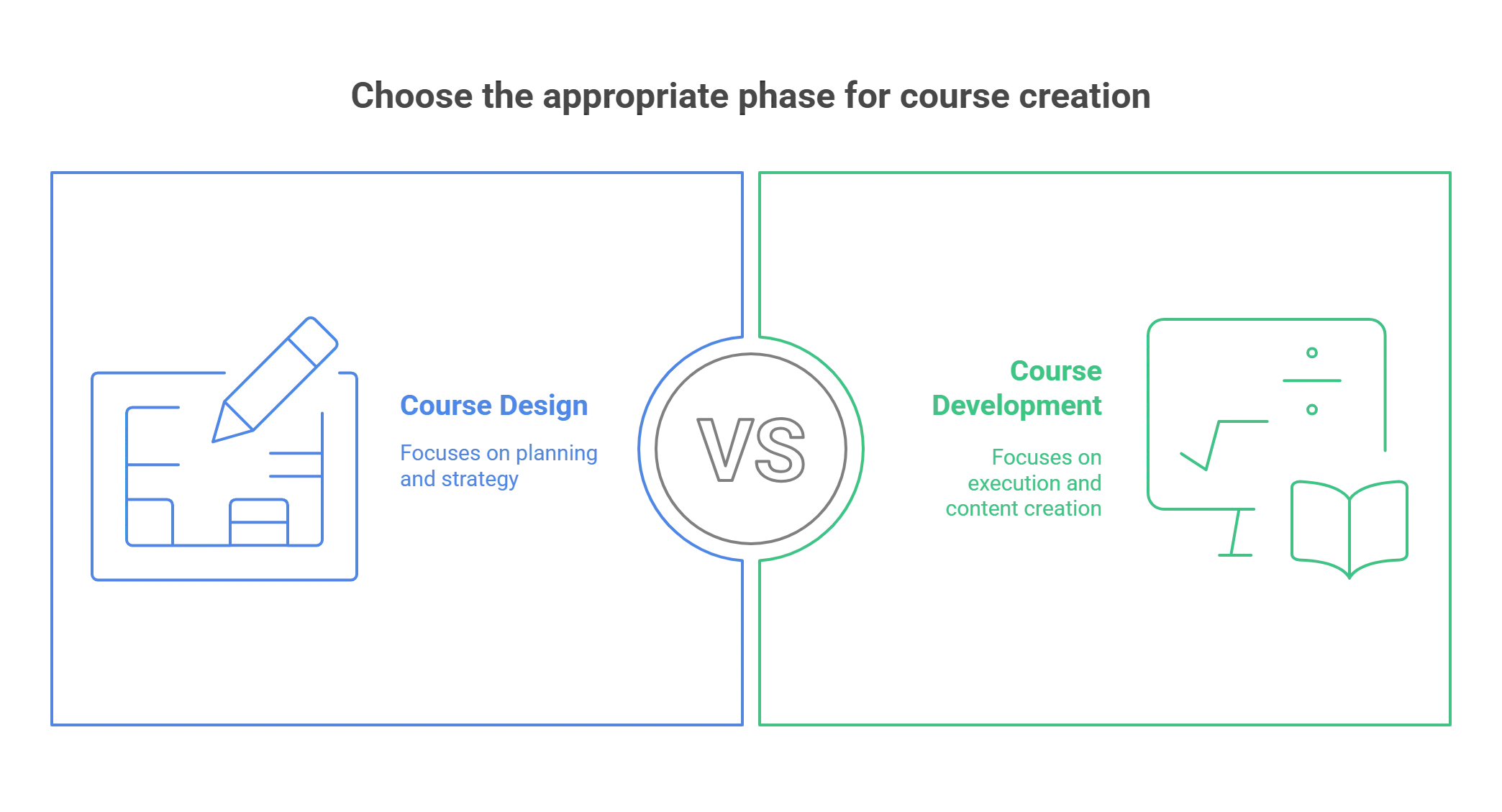
The Concept
Course design comes first within the workflow. This process involves ideation of the program, research about existing programs, setting goals, and setting criteria for program outcomes. Educational program design is an extremely important step and the foundation of the project.
Once these basics have been established, the next phase – course development – kicks off. Course development is an execution-heavy process that requires a very different set of skills to power it. This process includes creating content for the entire course and bringing various modules to life.
The Process
The process itself is very different for both stages.
For instance, in the research phase of course design, the lead will identify a gap that needs to be filled through courses. They will delve deeper into audiences’ needs and how content can better serve them.
Course design leads must also understand the challenges and limitations of audiences so that the course can be effective. They will need to clearly identify the objectives of the course and determine how its success will be measured.
On the other hand, course development requires developers to understand what kind of technologies, learning formats, and design flows can make learning more effective. They will need to flesh out the curriculum extensively and painstakingly produce the final product, which can easily be accessed and distributed.
Key Skills Needed for Course Design & Course Development
Course design and course development demand unique skills. Here is a snapshot of the core skills required for both processes:
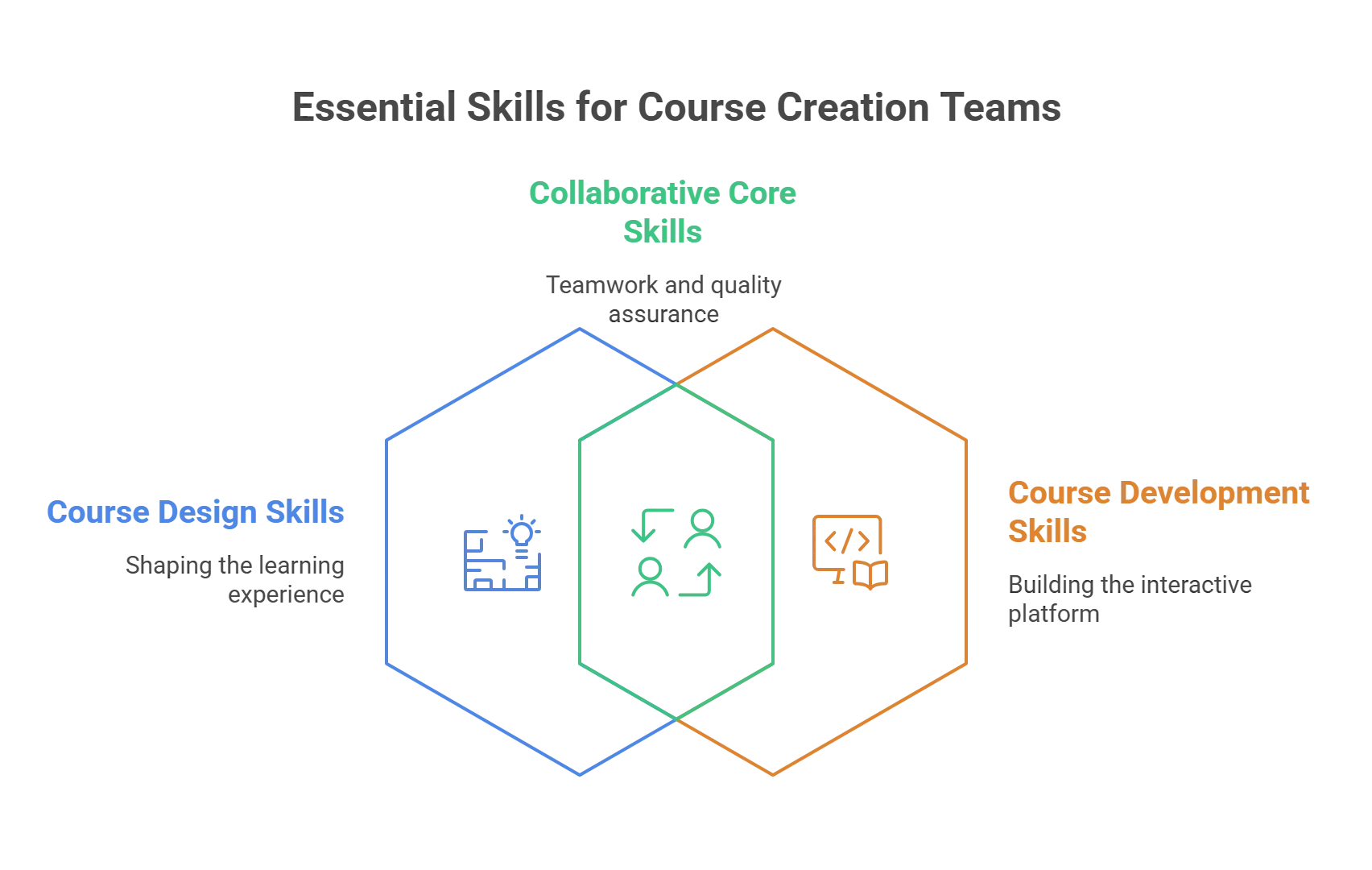
Course Design
- Domain Knowledge: Course designers or instructional designers can benefit from having some domain knowledge in the subject related to the course. They need not be experts.
- Research: Stellar research abilities can help course designers identify gaps and needs in the market and the approach to learning. They must be able to sift through data and leverage it to build courses. They must also have a clear idea of how to structure online courses to stand out from the clutter.
- Problem-Solving: Addressing current learning gaps through creative problem-solving is useful for instructional designers.
- Project Management: Course designers need to engage with multiple stakeholders, from developers and curriculum providers to management.
Course Development
- Tech Skills: As e-content becomes more engaging and interactive, projects need developers with a wide range of technical skills. The technical staff builds the software and interfaces required to make content consumable and accessible.
- Domain Skills: Subject knowledge is a key aspect of ensuring that the course material is authentic and error-free.
- Soft Skills: Collaboration and communication skills are soft skills that collaborators will need to possess. They must leverage communication skills to stay connected and function as a team. Accountability is also an important aspect of this journey.
Understanding the Importance of Efficient Course Development
Efficient course development is essential for academic institutions striving to maintain relevance and financial stability. Lengthy and inefficient development processes delay course launches, directly impacting market readiness and student enrollment rates.
Institutions implementing streamlined course uplift services can respond faster to evolving market needs, enhancing course quality and student satisfaction. McKinsey highlights that optimized course creation leads to better alignment with industry demands, which is critical as the online learning sector expands rapidly.
Inefficiencies increase costs and reduce ROI, making it harder for institutions to stay competitive. By accelerating time to market, academic leaders can ensure that their offerings meet the latest educational standards, driving improved student outcomes and institutional growth.
Streamlined course development is a financial necessity and a strategic imperative for long-term success in the dynamic educational landscape.
The Role of Streamlined Course Uplift Services
Specialized course enhancement services update and refine current courses to improve their relevance and effectiveness. These services assist institutions in ensuring that course content remains in line with current educational standards, enhancing learning outcomes and competitiveness in the market.
By improving current courses instead of beginning a new one, institutions can save time and resources, speed up time to market, and uphold high-quality standards in their offerings.
Specialized course enhancement services offer targeted updates that align courses with evolving educational needs and market demands.
- Improved Content Relevance: Revisions guarantee that course material aligns with current industry and academic norms, maintaining the content’s freshness and interest.
- Efficiency Gains: Streamlined processes reduce the time required to implement changes, directly impacting the speed of course launches.
- Improved ROI: Institutions reduce costs and maximize their investment returns by focusing on uplifts rather than full redesigns.
Strategies to Accelerate Time to Market in Online Learning
Accelerating course development is crucial for staying ahead in the competitive online learning market. Here’s how to achieve it:
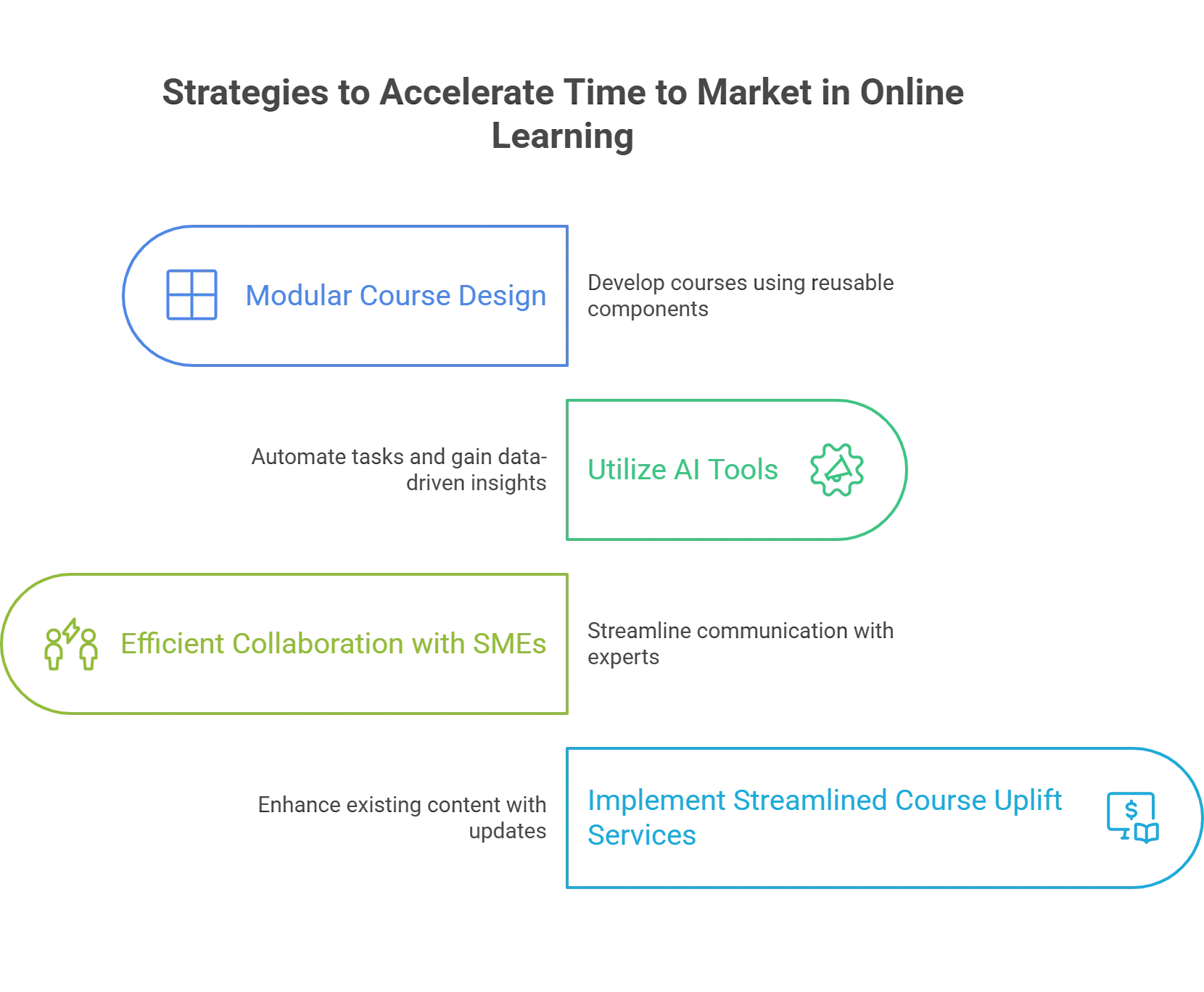
1. Modular Course Design
Develop courses using modular components that can be reused and updated independently. This reduces the need for complete overhauls and allows rapid adaptation to new trends and standards, saving time and resources.
2. Utilize AI Tools
Leverage AI-driven platforms to automate grading, content personalization, and updates. This reduces manual workload, improves efficiency, and accelerates the course creation. AI can also provide data-driven insights to refine courses quickly.
3. Efficient Collaboration with SMEs
Use digital collaboration platforms like Slack or Microsoft Teams to streamline communication with subject matter experts. This speeds up the feedback and approval process, ensuring course content is reviewed and finalized more quickly.
4. Implement Streamlined Course Uplift Services
These services refine existing content by incorporating the latest standards, technologies, and feedback. They enhance course quality without the time-consuming process of starting from scratch, significantly reducing the time to market.
Maximizing ROI through Efficient Course Development
Optimized course development is key to maximizing ROI by cutting costs, improving resource allocation, and driving revenue. Here’s how:
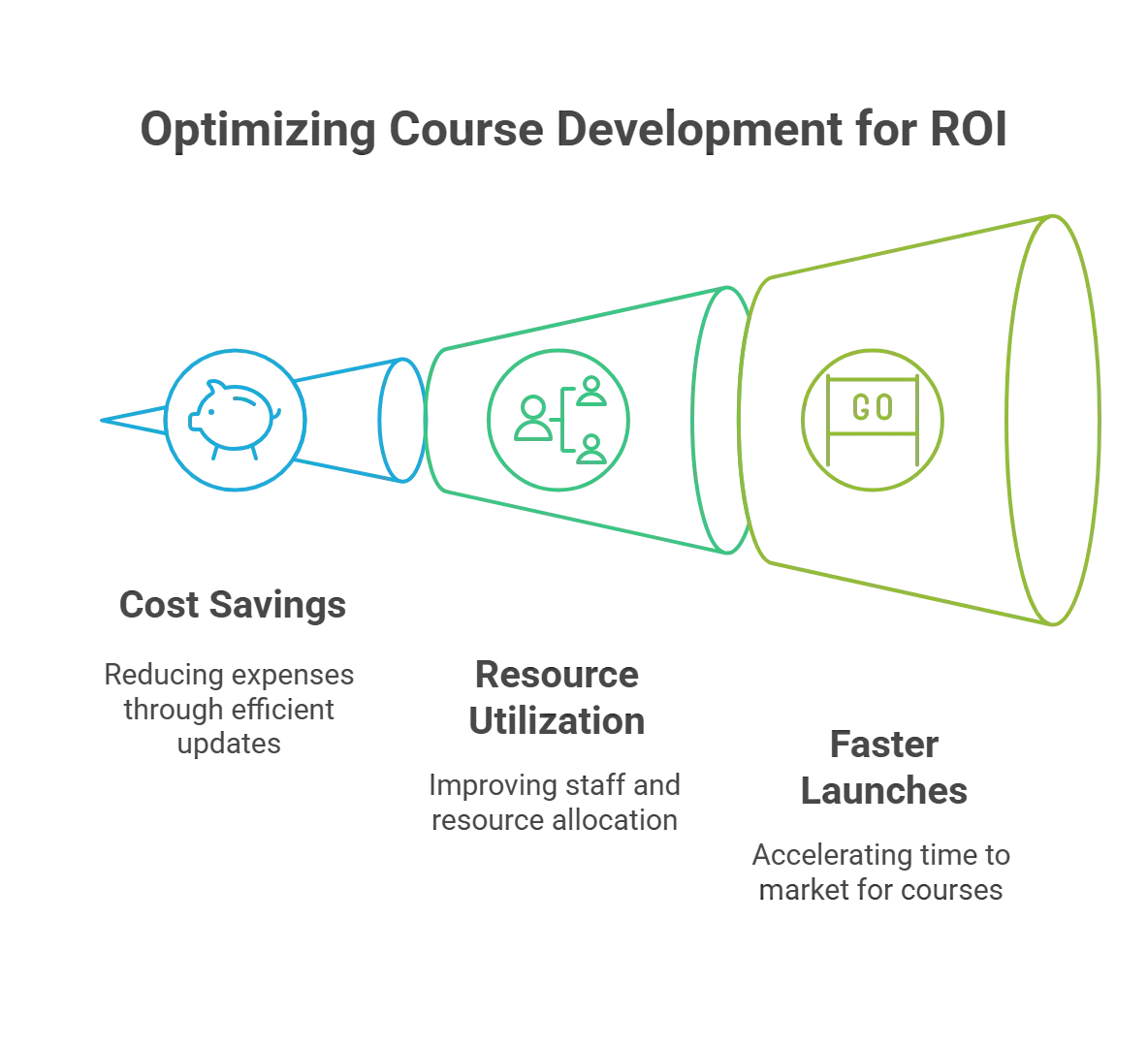
1. Cost Savings
Streamlined course uplift services update existing content efficiently, avoiding costly redesigns. This approach helps institutions maintain up-to-date course material without extensive investments.
2. Better Resource Utilization
Implementing modular course design allows quicker updates and better use of staff time, focusing efforts where they are most impactful. Better resource use leads to significant operational savings.
3. Faster Launches
Accelerating time to market ensures courses are launched promptly, capturing market opportunities. Faster course updates mean institutions can respond quickly to changing educational demands, leading to higher student enrollments.
Leveraging Technology to Enhance Course Efficiency
Technology plays a crucial role in simplifying course development, enhancing productivity, and decreasing time to market.
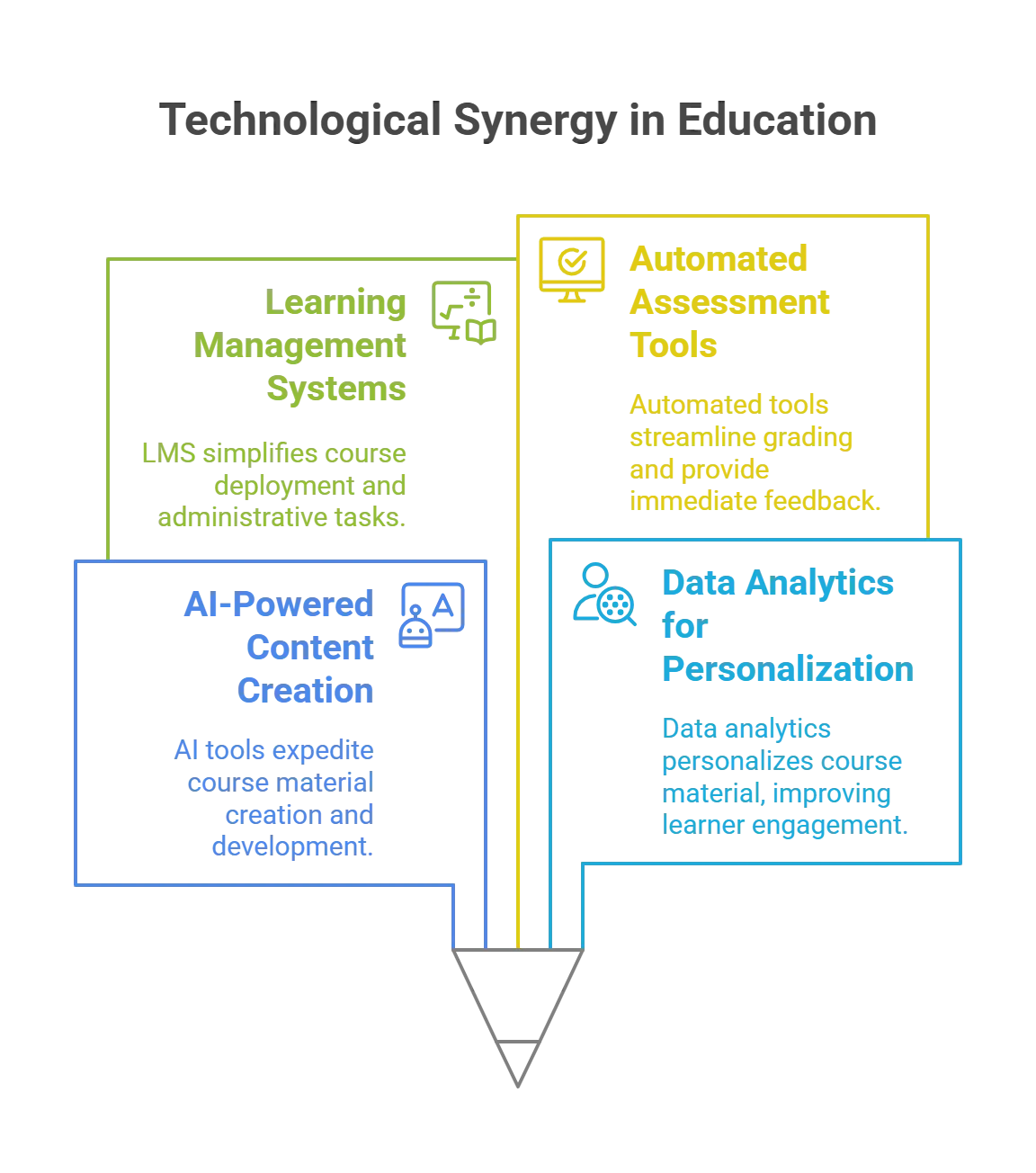
1. AI-Powered Content Creation
Utilizing AI tools such as OpenAI’s GPT can expedite the generation of course material, minimize manual labor, and accelerate the development process.
2. Data Analytics for Personalization
Platforms like Coursera and Udacity utilize data analysis to customize course material according to learner input, improving participation and efficiency.
3. Learning Management Systems (LMS)
LMS such as Blackboard and Canvas make course deployment easier, handle administrative tasks automatically, and monitor student progress to enhance efficiency.
4. Automated Assessment Tools
Automated Assessment Tools like Gradescope streamline the grading process and offer immediate feedback, reducing instructors’ workload and expediting course completion.
Best Practices for Optimized Course Development
Academic leaders are vital in enhancing course development by implementing effective and strategic practices. Here are actionable best practices:
- Utilize Data Analysis: Use it to uncover deficiencies in current courses and opportunities for enhancement, enabling focused revisions to boost educational results.
- Promote Cooperation Among Academic Departments: Foster interdisciplinary collaboration to exchange resources, ideas, and tools, simplifying the course development process and preventing duplication.
- Establish Regular Feedback Channels: Ensure students and faculty create continuous feedback loops. This approach promptly addresses issues and refines course material, ensuring it meets current educational standards.
- Take Advantage of Streamlined Course Enhancement Services: By regularly updating existing courses, you can keep content up to date and in line with industry trends, saving time and money.
- Utilize Technology for Increased Efficiency: Use artificial intelligence and digital resources to streamline administrative duties, monitor course progress, and enhance tailored learning opportunities.
- Establishing Clear and Manageable Timelines: Developing courses will speed up the time it takes to bring them to market and ensure they remain current and competitive.
Conclusion
Optimized course development is crucial for academic institutions to maximize ROI, reduce costs, and improve student outcomes. Investing in streamlined course uplift services accelerates time to market, ensures content remains relevant, and enhances overall efficiency.
Leveraging technology such as AI and data analytics further refines the development process, enabling institutions to stay competitive in the evolving online learning landscape. Partner with Hurix Digital to enhance your course development strategy. Our expert solutions will help you achieve faster and more efficient course deployment.
Contact us today to discover how we can support your institution’s success in the dynamic education environment.
Summarize with:

Senior Vice President
A Business Development professional with >20 years of experience with strong capability to sell new solutions and develop new markets from scratch. New Market Entry Specialist with experience working in the largest emerging markets. Exceptional experience in conceptualizing, ideating and selling new learning technologies like VR AR, etc. across multiple industry verticals.
 Upcoming Masterclass | Build an Army of Brand Evangelists using Training & Development | November 20th, 8:30 AM PDT | 11:30 AM EDT | 10:00 PM IST
Upcoming Masterclass | Build an Army of Brand Evangelists using Training & Development | November 20th, 8:30 AM PDT | 11:30 AM EDT | 10:00 PM IST



